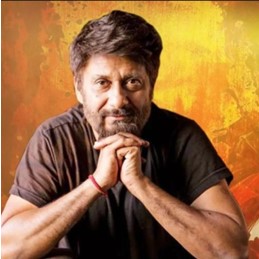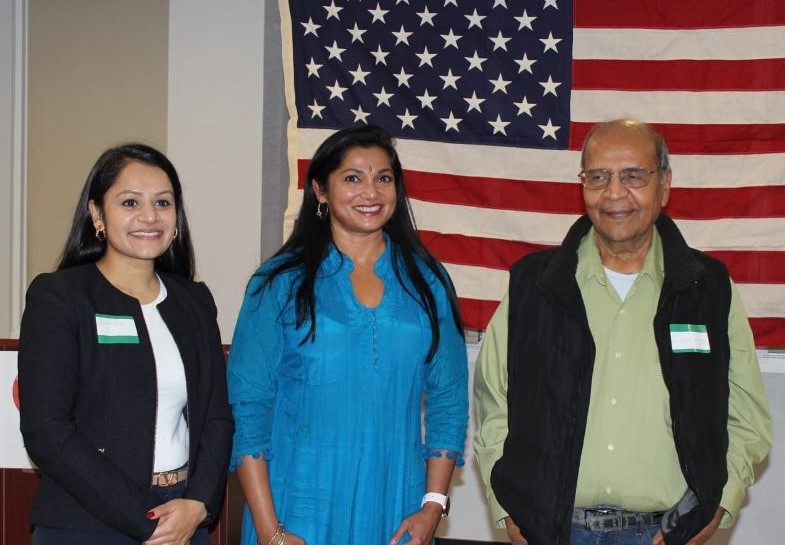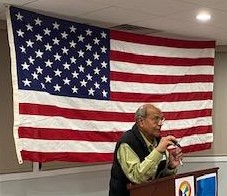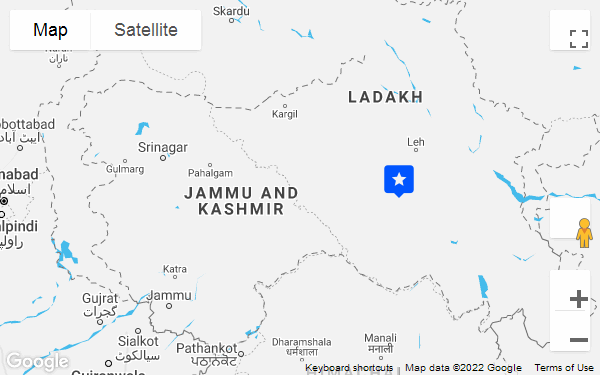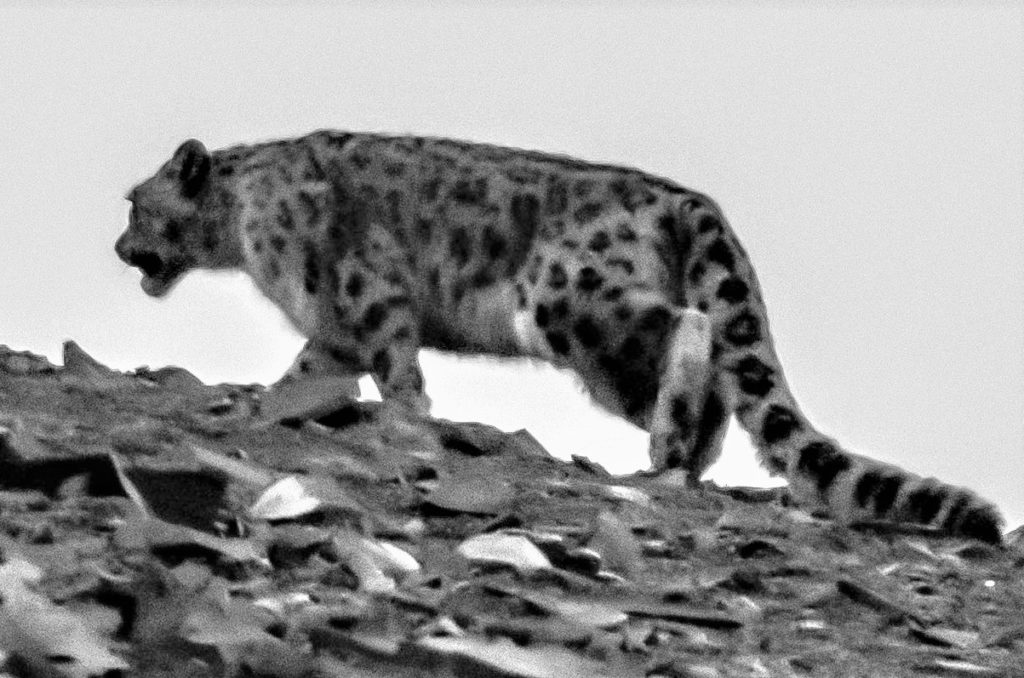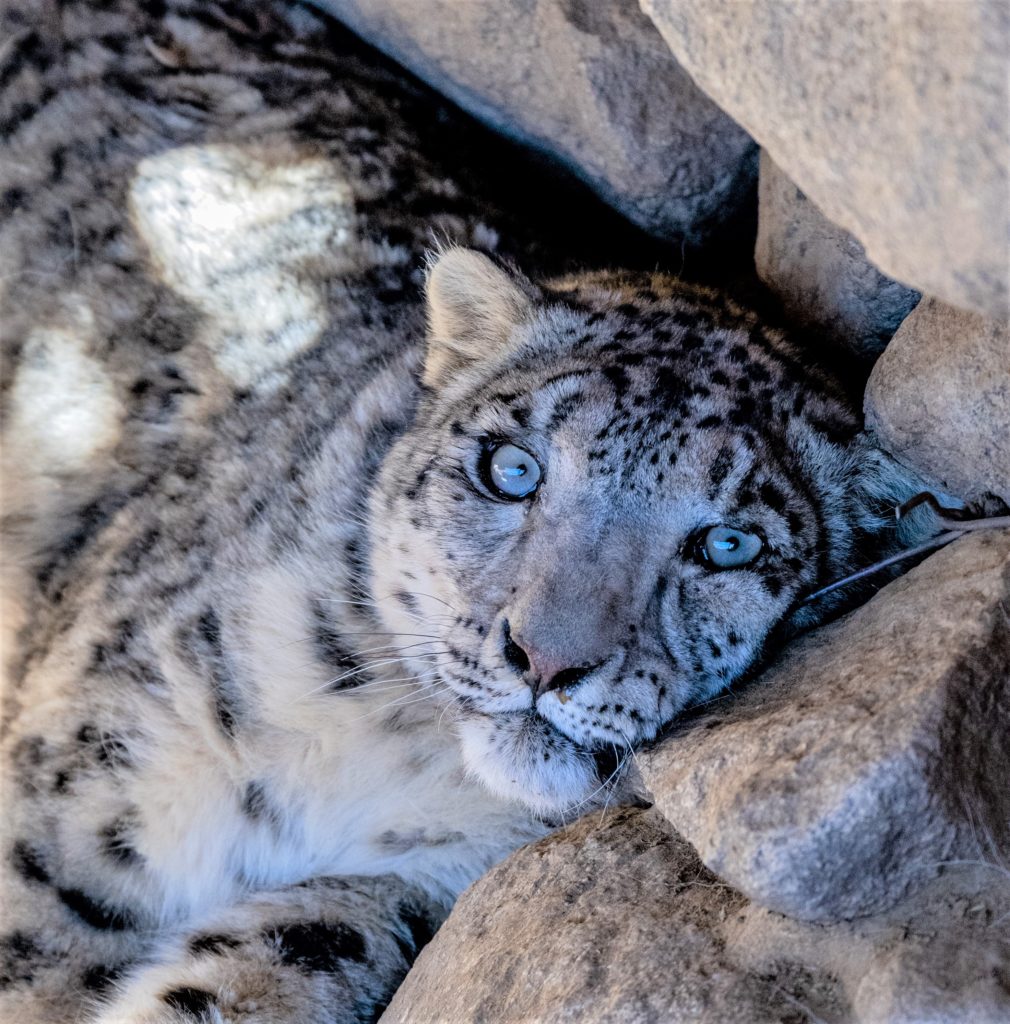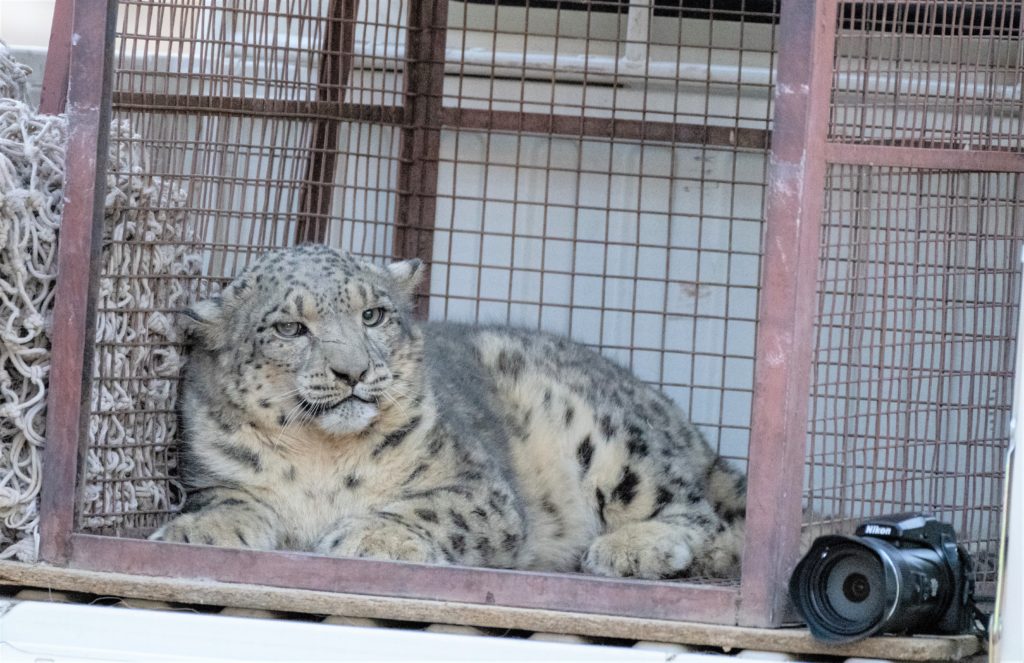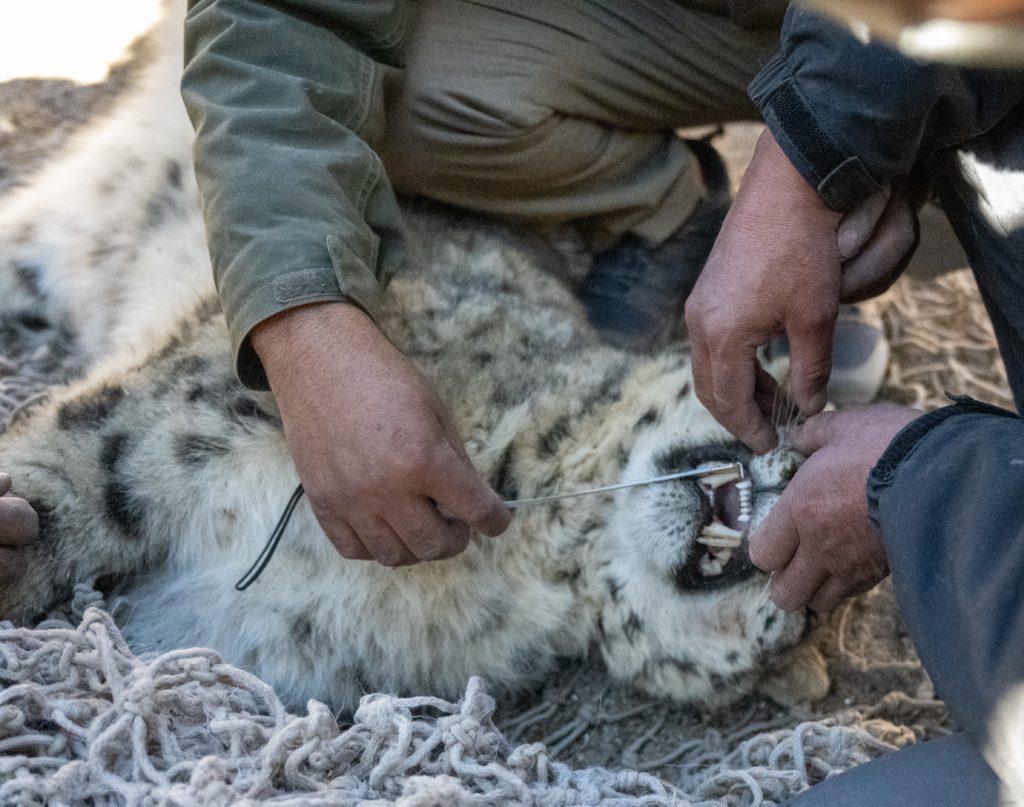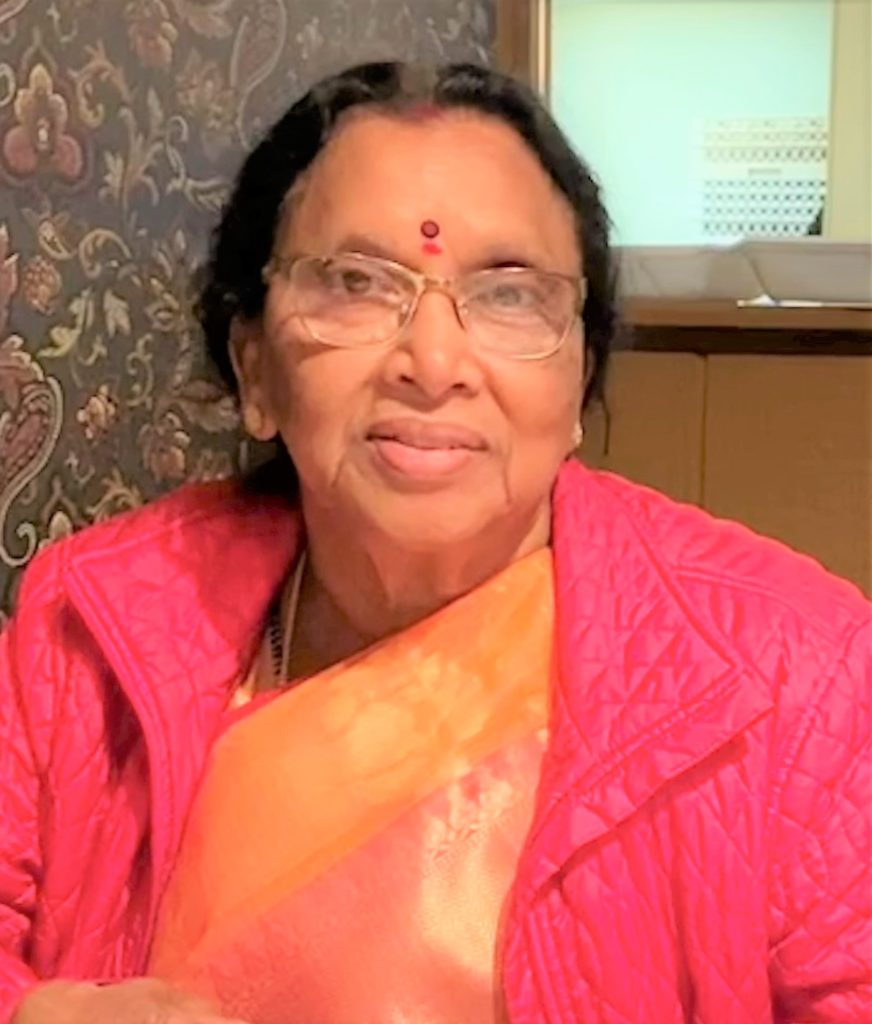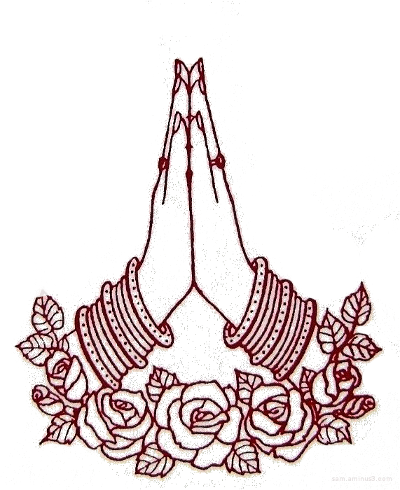Archive for category April 2022
British Airways Revives Its Nonstop to London Heathrow from Pittsburgh
Posted by admin in April 2022, Past issues on April 14, 2022
British Airways resumes its nonstop services to London Heathrow starting in June, four days a week. On Tuesdays, Wednesdays, Fridays and Sundays the flight departs from London Heathrow at 4:45 p.m. and lands in Pittsburgh at 7:50 p.m. The return flight will depart Pittsburgh the same day at 9:50 p.m., arriving in London at 10:10 a.m. the following day
.British Airways started the service to Pittsburgh in 2019. The flight operated successfully for a year before Covid-related travel restrictions led to the flight’s suspension in 2020.
The flight is expected to generate more than $50 million annually to the Pittsburgh regional economy. For people traveling to the Indian subcontinent, this convenient flight offers several options to reach many big cities with one stopover in London Heathrow, and all second-tier cities via Dubai, Abu Dhabi. Qatar, or through Mumbai and New Delhi. ∎
रामायण सारांश में
Posted by admin in April 2022, Past issues on April 14, 2022
लेखक: जुगिन्दर लूथरा, वियर्टण, पश्चिम वर्जीनिया
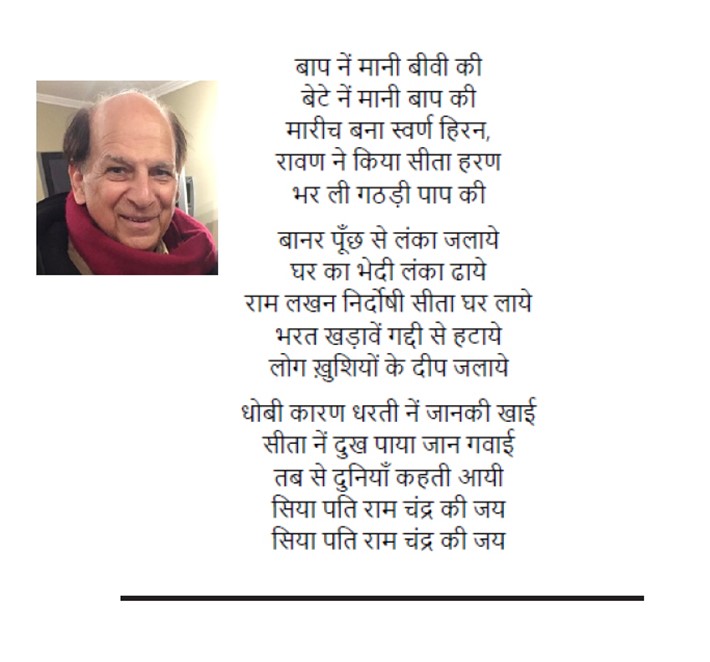
Summary of Ramayan
By Juginder Luthra, Weirton, WV
Father agreed with what wife said
Son agreed with what father said
Marich transformed to a golden deer
Ravan kidnapped Sita
Filled his bag of sins
Monkey burnt Lanka with his tail
Lanka fell by leaked family secret tale
Ram Lakhan brought innocent Sita home
Bharat removed sandals from throne
People joyfully lit lamps in homes
Due to washerman, earth swallowed Janaki
Sita bore sufferings, even lost her life
Since then people keep saying,
“Victory to Sita’s husband, Ram Chandra!”
“Victory to Sita’s husband, Ram Chandra!” .∎
“The Kashmir Files” Portrays the Brutal Genocide and Exodus of the Kashmiri Pandits
Posted by admin in April 2022, Past issues on April 12, 2022
By Bupesh Kaul, Squirrel Hill, PA
Bupesh Kaul, a resident in our area for over twenty-five years, is a practicing physician, now in semi-retirement. He was an associate professor at the University of Pittsburgh School of Medicine. This is his review of Vivek Agnihotri’s acclaimed film The Kashmir Files.
The release of the movie, The Kashmir Files, has led to a renewed interest in the happenings in the verdant vale of Kashmir over three decades ago. The history of Kashmir is very tangled and complex — as all history usually is.
In the Indian context, Kashmir was an important center for learning — arts, literature, religion, and spiritual quest -— a place where Adi Shankaracharya preached as he revived Hinduism during his travels in the eighth century, CE.
The advent of Islam in the valley in the 14th century, though initially comparatively peaceful, became particularly brutal for the Kashmiri Hindus (Kashmiri Pandits) resulting in mass conversion to Islam, not always by persuasion. At one point, only a small number of Hindu families were left in the valley. Following the Anglo-Sikh war in mid-19th century, Kashmir, which was a part of the Sikh Empire and was mostly Muslim, was “sold” to the Raja of Jammu by the British for a princely sum of 75 lakh Nanakshahi Rupees. The State became Jammu & Kashmir (J&K).
In August 1947, J&K had four distinct regional ethnicities. The Kashmir Valley (Kashmiri), Jammu (Dogri), Ladakh (Ladakhis) & the Northern territories (Gilgit and Baltistan). The Valley had a Hindu minority, about 2-3% of the population. The Kashmiri language was spoken only in the Valley.
It is beyond the remit of this article to trace or debate the political machinations, calculations, and intrigue from 1947 to 1990 that led to the exodus of the minority Kashmiri Pandit community from the Valley in 1990. But what is indisputable is that a premeditated, calculated effort was made to rid the Valley of its Hindu natives. Long before the term “ethnic cleansing” gained currency in the West, it was a reality for the minority Hindu community in the Kashmir Valley. A targeted and carefully orchestrated campaign resulted in a premeditated brutal murder of scores of Pandits that led to the mass exodus of the minority Hindu population from the Valley.
The film also brings into sharp focus the inability/unwillingness of the Indian state and its media to recognize this issue as an Indian issue instead of seeing it as a Kashmir issue. The film does not portray the planning, coordination, and orchestration of the attacks by India’s immediate neighbors. Excepting for this and other minor quibbles, the movie graphically captures what should only be called genocide by terrorism, leading to the exodus of almost all Kashmiri Pandits from the Valley.
Watching the movie at the Waterfront Multiplex, I and other members of the Pandit community had a cathartic release, with many in the audience sobbing through the screening. The makers of The Kashmir Files do not shy away from making bold statements and that is the strength of the movie.
The director, Vivek Agnihotri gives voice to alternate viewpoints for which he needs to be commended. The Pandit community hopes this film will initiate a dialog to bring out the deafening silence by both the media and a spate of weak, corrupt politicians and officials who conspired, perhaps unwittingly, to condemn the whole Pandit community to become refugees in their own land. And bring to justice the perpetrators of the murder, loot, rape, and pillage perpetrated on a peaceful community.
The Pandits believe in the idea of India and in law and order, and not in vigilante justice. Which is why not one Kashmiri Pandit picked up a gun to avenge the murderous wrongs perpetrated on the community. ∎
Coming of Age for Indian Americans in the ‘Burgh
Posted by admin in April 2022, Past issues on April 12, 2022
People of Indian origin in our area, while continuing with their careers as professionals and entrepreneurs, are expanding into public life in elected offices in schools and local governments.
Last December, Ravi Balu and his volunteers felicitated three members of our community who made small steps in their public lives by seeking and getting elected to various offices. They are:
Bhavini Patel (Democrat), the council member of Edgewood Borough; Veena S. Szymkowiak (Republican), Board Member of the North Allegheny School District; and Mandal Singh (Democrat), Director, the Gateway School Board.
Ravi Balu organized a well publicized event open to the public at the Triveni Center in Monroeville. He introduced the three elected officials, giving them the podium to talk about what motivated them to seek elected public offices in the midst of their busy careers and entrepreneurial commitments. There was also a Q/A session at the end. ∎
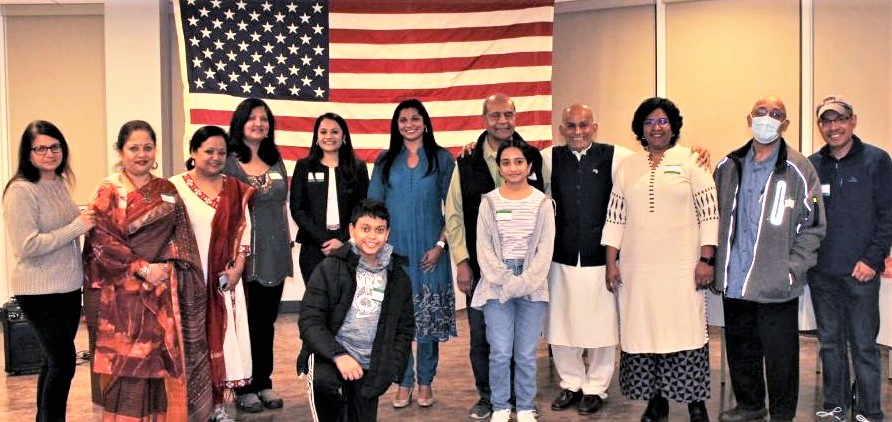
Snow Leopard Expedition in Ladakh
Posted by admin in April 2022, Past issues on April 12, 2022
By Nitin Madhav, Washington, DC
Nitin Madhav was born and raised in Pittsburgh, graduating from Penn Hills Senior High School and the University of Pittsburgh. After his bachelor’s and two master’s degrees, he began working in public health in several countries around the world. He has traveled extensively and is an avid photographer. His work is on nitin.photography and on Instagram at @nitinmadhav.
I have never packed fourteen pairs of long underwear for a trip to India! When my friend, Behzad Larry, invited me to join him on an expedition to see snow leopards in Ladakh in November — he warned me it would be cold — I jumped at the opportunity since this was not the usual thing a guy from Pittsburgh does. I have been to India many, many times to visit family or for religious festivals, but never had to pack for the cold. This was a first — a snow leopard safari in the high mountains of the Himalayas.
Behzad worked with his Ladakhi partners, Abdul Rashid and Dorjay Stanzin, to set up a camp for snow leopard safaris near Hemis National Park (32 miles from Leh at 16,000 ft elevation), which has only about 70-80 of these cats, out of a worldwide population of about 3500.
Behzad, who is from Indore, India and an accomplished wildlife photographer-turned-conservationist, saw a void in the tourism experience that Ladakh offered. While most people came to Ladakh to trek, there is an incredible story for these visitors to share with people interested in wildlife, especially the critically endangered snow leopards.
Conservation in India has seen a positive change in the last few decades. While there is still human/animal conflict where man is encroaching on wildlife habitat, there is a renewed urgency in maintaining the biodiversity of India. There are several national parks where one can see tigers, but few with the world’s most elusive big cat — snow leopards. Ladakh happens to be the place with the highest concentration of snow leopards in India.
The altitude is important to factor into travel plans in Ladakh. I flew from Delhi to Leh, the capital, and spent two days acclimatizing to the high altitude. I am pretty fit, but still found simple tasks like putting on my shoes left me gasping for breath. Behzad told me that this was normal, and I would acclimatize in a few days, which I did.
Since I have been on many safaris across Africa, the Ladakhi experience is not significantly different… just miserably colder. Behzad works with highly skilled spotters who can identify snow leopards on high mountain ridges from great distances, sometimes up to seven kilometers away. They depart early in the morning, radioing back to camp when a cat has been spotted. Then, we bundle up, grab our cameras, and hop into the jeep.
Snow leopards are most active at dawn and twilight, so it is key to make the most of this time. The spotters look for blue sheep, known as bharal in the local language. A hungry snow leopard will often target blue sheep in its hunt; so, if these local experts spot these sheep, it is most likely that a cat is somewhere around.
Snow leopards camouflage themselves in the rocky terrain. They roll around in the dirt before stalking bharal, covering their coats in soil. Their spots make them blend in with rock formations, making them difficult to spot. Thus, it is important to work with trained spotters who know what to look for. Sometimes, the spotters will see a cat and will try to track it; however, the cat will disappear over a mountain ridge. They carefully scan the mountains paying attention to the bharal and the condition they are in. If they are agitated or seem on edge, a snow leopard could be nearby. Sometimes the wait can take all day in the cold, which is why I made sure to pack all those long johns!
While there are others that offer snow leopard tours, it is vital to ensure that these are done ethically, without baiting the cats. When snow leopards are baited, it creates the expectation that domestic livestock are easy prey for the cat — which leads to ongoing human/animal conflict as herders can lose their entire herd to a snow leopard, and they, in turn, would prefer to kill the snow leopard to avoid future losses.
The first time I saw a snow leopard, I mistook a group of bharal for bushes, and I asked Behzad to stop for a second, when one of our trackers hollered “Snow leopard!” and indeed, it was. It was a scruffy beast, not at all like the supermodel snow leopards I had seen in photos. This was a beast who had worked hard to find every meal — and he slowly approached the bharal which fled in fear — but not before Behzad got a few shots of the snow leopard close to the bharal.
The next day, we got a call telling us that a snow leopard had gotten trapped overnight in a shepherd’s corral in a village about an hour away, and were invited us to take part in its rescue. The snow leopard snuck into a corral at night. The shepherd heard the commotion of the cat attacking the sheep, and let the other sheep out and locked the gate with the snow leopard captive inside.
The Indian Wildlife Service rangers came by, tranquilized the snow leopard and after it was sedated, brought it out of the corral and took some biometric data before releasing it into the wild.
While it was sedated, I got to pet it and be a part of the biometric measuring. It was a beautiful male cat about five years old. I have been told many times that that is an unusual occurrence — I am the only one who has had a chance to do that, of the several hundred people who have gone on Behzad’s expeditions. It was an experience I will never forget — which made the trip so much more worthwhile.
Behzad kept saying he didn’t know if he could top that experience, and to be honest, nothing quite as interesting happened the rest of the trip. But this was the thrill of a lifetime.
If you are interested in a snow leopard expedition in either Ladakh or Kyrgyzstan, Behzad is offering a discount to readers of the Pittsburgh Patrika — mention that when you contact him on his website: https://voygr.com/ ∎
Obituary: Parvathi Gutti (1944 – Dec 17, 2021) Anesthesiologist, Affable & Anchor to Her Husband
Posted by admin in April 2022, Past issues on April 12, 2022
By Nangali S Srinivasa, Murrysville, PA
Parvathi Gutti, a long-time resident of Jeannette, Pennsylvania passed away surrounded by her family on Friday December 17, 2021, after an abdominal surgery needed for a complicated medical condition.
She was born on January 12, 1944 in Brahmapura, a small village in Krishna District, Andhra Pradesh, India. Her father Perrysetti Subbiah and mother Mahalakshamma were traditional weavers. Parvathi was the last of sixteen siblings. Born of humble beginnings, she was the first girl in her village to get a formal education, which led her to earn a medical degree from the Andhra Medical College, Vishakhapatnam, the oldest and a top-ranked medical college in Andhra Pradesh.
Losing her parents when she was very young, Parvathi was raised by her elder brother. Being the youngest of sixteen children, she was content with household chores. She started school when she was nine, on the recommendation of her home-school teacher, who recognized her intelligence. In small villages in those days, girls were not sent to school. During her school days she was acquainted with a Kuchipudi dance student, who was the younger sister of Varaprasad Gutti Rao, whom she would later marry. With financial support from others, Parvathi went to Hindu College in Machilipatnam, a nearby coastal town. Later, she earned a scholarship to go to Andhra Medical College, Visakhapatnam.
Soon after graduation, she married Varaprasad in 1968 before he went to Rensselaer Polytechnic Institute in Troy, NY, for his PhD in Nuclear Engineering on a NASA fellowship. Parvathi joined him, pursuing her studies in anesthesiology at Albany Medical Center, later completing a 6-month Fellowship in Gyne-Anesthesia at the Yale University hospital.
The Guttis moved to Latrobe in 1974 where she joined the Latrobe Area Hospital, which later became part of the Excela Health System and worked as a staff anesthesiologist for nearly 48 years. She started the first Pain Clinic in Westmoreland County, becoming the chairman of the Department of Anesthesiology at the hospital. She was an early donor for the expansion of the Latrobe Area Hospital in the 1990s and was the Co-Medical Director of the Westmoreland Latrobe School of Anesthesia during 1981 and 1986. She set up an annual award for outstanding nurse anesthetist. After retirement, she continued to work part-time. She was well liked by the physicians, nurses, and support staff who worked with her.
She loved the performing arts, especially Indian classical music, dance, and theater. She took keen interest in training her children from a very young age and developing them into mature artists. She served as a secretary of SPIFPA Foundation for performing arts, affiliated with the Pittsburgh Foundation and Community Trust.
A sheet anchor for her family and a strong supporter of her husband in many of his endeavors, Parvathi was quite stoic in accepting personal losses. In the early days of S.V.Temple in the 1970s, when people were not even sure of a need for the very idea of a Hindu place of worship here, Parvathi and her husband supported the concept by donating his very first month paycheck to the temple project. The Gutti family has generously supported the growth of the temple in many ways to this day.
Parvathi was well liked by members of the temple community for her simplicity, mild nature, loving spirit, and above all, her warm hospitality. She leaves behind her husband of fifty-four years of marriage, her daughter Bindu Madhavi, son-in-law Kumar Rachuri, and two granddaughters Krishnaa and Siri. A large number of her extended family and friends virtually attended the funeral at the Frederick Funeral Home, Latrobe. She was given a Hindu burial, with Shri Samudrala Venkatachayulu from the S.V.Temple helping the Gutti family with the religious rites.
From the Gutti Family: Thanks for Your Support in Our Time of Grief
Dear Friends: We thank you very much for all your help and support during our time of grief. So many of you offered your condolences, came to pay your respects and share in our grief, provided us with nourishment (both physical and emotional), gave us your shoulder to lean on, helped us with all the funeral logistics that we did not have the presence of mind to deal with and in so many other countless ways, big and small. Your thoughts, words and actions mean more to us than what you will ever know.
We owe our thanks to the S.V.Temple staff, Officers and the Board, including the temple community, as well as to the entire Pittsburgh Indian Community and the entire Excela Health Medical community.
So many of our personal friends went out of their way to care for us. Thank you all.
The Gutti Family and the Rachuri Family
Varaprasada Rao, Bindu, Krishna, Kumar, and Siri ∎
In the Globalized World, Even Internationally, All Politics is Local & Personal
Posted by admin in April 2022, Past issues on April 12, 2022
I read with anxiety Canadian prime minister Justin Trudeau’s warnings to the Canadian truck drivers’ mostly peaceful protest against the Covid vaccination, blocking truck traffic between the 2000-mile-long US and Canada border. These trucks provide smooth supply chains and logistical support between Canada, US, and even Mexico. They deliver parts for factories and move finished goods, industrial machinery, large volumes of agri and animal products, pharmaceuticals, medical supplies, and vital components for the auto and aerospace industries. Delivery delays from this protest were choking the already snarled post-Covid global supply chain costing billions of dollars to the economy. Consider this: In 2020 Canadian merchandise export to the US was $375 billion (70% of its total exports) and import from the US was $349 billion (62% of its total imports). And over 55% of US-Canadian merchandise moves in trucks.
So, Justin Trudeau, the Liberal Party Canadian Prime minister, with the truckers only a few days into their protest, assumed emergency powers to manage the strike. The last time this happened was when his father Pierre Trudeau declared an emergency fifty years ago during the violent protests (“terrorism”) by Quebecois.
Justin Trudeau’s warnings to the weeks-long truckers protest was stern. “It’s high time that these [striking truckers] illegal and dangerous activities stop… … They are a threat to our economy and our relationship with trading partners. They are a threat to public safety.” His other words of warning: “Blockages, illegal demonstrations are unacceptable, and are negatively impacting businesses and manufacturers. We must do everything to bring them to an end.”
“If you joined the protests because you’re tired of COVID, you now need to understand that you’re breaking laws. The consequences are becoming more and more severe. You don’t want to end up losing your license, end up with a criminal record, which will impact your job, your livelihood, even your ability to travel internationally, including to the U.S.”
Then, he leaned on President Joe Biden for support: “President Biden and I both agree that for the security of people and the economy, these blockades cannot continue,” Trudeau said. “So make no mistake, the border cannot and will not remain closed… Canada’s banks are governed by laws … that ensure funds cannot be used for criminal or illegal activity, and these blockades are illegal…” Trudeau said he updated U.S. President Joe Biden on the situation, including discussing the influences of U.S. right-wing citizens and foreign money funding this illegal activity.
The same Trudeau, last year, when farmers’ protests in New Delhi went on for over a year led mostly by Punjabi farmers with financial and political support from the active Canadian Punjabi diaspora, addressed the Sikhs on the Guru Poornima day with these words:
“I would be remiss if I didn’t start by recognizing the news coming from India about the protest by farmers. The situation is concerning. We are all very worried about family and friends… Let me remind you, Canada will always be there to defend the rights of peaceful protesters. We believe in the process of dialogue. We’ve reached out through multiple means to the Indian authorities to highlight our concerns. This is a moment for all of us to pull together.”
The Indian farmers protest was against the Modi government’s efforts to bring market reforms in the farming sector by giving additional options for farmers to sell their produce to whomever they want to sell, while a) preserving the minimum support price for their products guaranteed by the government, and b) retaining their option to sell their products to existing cartels in Punjab now controlling the grain market for over 60 years.
The Trudeauvian hypocrisy of supporting the year-long Indian farmers’ agitation blocking national highways around New Delhi in the middle of the Covid pandemic led by the Punjabi farm lobby on the one hand, while assuming emergency powers to quell the mostly peaceful just week-long protest of Canadian truckers is astounding. Remember, Justin, like his father, Pierre Trudeau, is the leader of the Liberal Party in Canada.
Trudeau’s political address to the Sikh’s in Canada on a religious festival (Guru Poornima Day), was not just out of political compulsion, with 17 MPs of Indian origin (many of them Sikhs) in his parliament, and four Indian-origin ministers (three of them Sikhs) in his cabinet.
Trudeau’s support for the farmers protest in India orchestrated by farmers from Punjab has a larger Canadian context. Today, of the over 300,000 truck drivers in Canada, nearly 20% are of Indian origin, more specifically, Sikhs. By comparison, in 1995, only 2% of the truck drivers in Canada were from the Indian sub-continent. In and around Toronto, Ontario and Vancouver, British Columbia, Sikhs account for nearly 50% of truck drivers.
And trucking being a lifeline for trade between Canada and the US, it is no wonder that Trudeau was trying to please not only the Sikh members in his cabinet and in the parliament, but also the nearly 60,000 Sikh truck drivers and many Sikh owners of trucking companies. The Sikhs are a vital link sustaining the Canadian economy. Incidentally, Punjabi-style dhabas are coming up in many truck stops across Canada and the US.
Trudeau was also trying to placate the 500,000 Canadian Sikhs, who are 50% of the Canada’s 1,000,000 people of Indian origin. In Canada’s population of 35 million, Indians are 3%, with Sikhs comprising of 1.5%. Remember, the population of Mumbai Metro area is over 20 million.
Pandering to his domestic Sikh constituency aside, there is no political or economic consequence for Trudeau in supporting the Indian farmers strike internationally. In the big scheme of things, Canada is a small potato for India. India’s foreign trade in 2019 is over $320 billion exports and $420 billion in imports, of which trade with Canada is paltry. Exports to Canada is only $2.9 billion and imports from Canada, $3.9 billion. For Canada too, trade with India is a small. The total volume of Canadian exports is $390 billion, and imports, $420 billion. Besides, Canada has no political gravitas internationally, being a weak second-tier partner in the Western alliance. In North America, the behemoth US dwarfs Canada in every measure.
This is perhaps why India’s foreign policy establishment ignored Justin Trudeau’s hifalutin support of the Indian farmers strike as his pandering to his Canadian Sikh constituency, purely for his domestic consumption. However, for Indians, Trudeau’s iron-fist way of managing the Canadian truckers’ strike brought his hypocrisy into sharp relief.
In 1996, Ralph Wright authored the book All Politics is Personal, and in 1997, Tip O’Neill, the famous Speaker of the US House of Representatives authored the book, All Politics is Local in the “local” US context. These books came out before the advent of social media. But with social media bringing everything into the open globally, seeing Justin’s Trudeau’s hypocrisy, one can say, even in international politics, All politics is personal & all politics is local as well.
An ironic end note: Many writers bearing Indian names were berating the Modi government in the American media for not negotiating with the farmers strike leaders last year. However, not one of them, to the best of my knowledge, had anything to say on Liberal Party Trudeau’s iron-fist tactics to break the mostly peaceful truckers strike in Canada. That is a fine example of the hypocrisy of left-leaning Indian and Indian-origin intellectuals among social and political scientists. ∎
Provoking Russian Invasion of Ukraine
Posted by admin in April 2022, Past issues on April 12, 2022
Henry Kissinger, in his Washington Post article (March 5, 2014) titled To Settle the Ukraine Crisis, Start at the End, didactically traced Ukraine’s convoluted political, cultural and religious history, and why Russia — not just Vladimir Putin — is obsessed with Ukraine. Kissinger’s advice was unambiguous: Ukraine “should not join NATO” while it “should have the right to choose freely its economic and political associations, including with Europe.” Kissinger is not alone on this. Among many other experts, George F. Kennan was the architect of American post-World War II strategy for containing the Soviet Union. In the late 1990s after the USSR imploded, Kennan called the expansion of NATO into Central Europe “the most fateful error of American policy in the entire post-Cold War era.” But US foreign policy machine and bipartisan Congressional leaders in the Obama, Trump, and Biden presidencies have been heedless.
President Biden, so soon after ending the longest (20 years) and the costliest ($2 trillion) American war in Afghanistan, knows that Americans are not ready for another military adventure thousands of miles away in Russia. Further, the US military and foreign policy advisors to Biden recognize that Russia is no Afghanistan or Iraq. And EU nations are not ready to spill their blood and draining their treasury in a military confrontation with Russia over Ukraine. Besides, 40% of EU’s natural gas comes from Russia, with which EU is historically interlinked in complex ways.
No wonder, other than sanctions — including sanctions on individuals in Russia — there is nothing the US can do for now. So, Russia is militarily overpowering Ukraine and prolonging the conflict. No matter how this ends, we are in for a long Cold War II.
Media in the US talk in moral tones about Russia’s military ambition and penchant for interfering in US domestic politics. But then, since WW-II, the US has deposed democratically elected leaders, propped up despots, and made the USSR implode, not to speak of countless asymmetric wars, big and small, in many parts of the world killing and maiming civilians in the thousands and destroying their physical infrastructure.
Russia is not, by any stretch of the imagination, an economic or technological threat to the US. Militarily, maybe. And yet, after dismantling the USSR, the US added fifteen new members to NATO, all encircling Russia, Wanting to admit Ukraine into NATO only provoked Russia. The American focus should be on China, a more menacing threat economically, politically, militarily, even culturally, and with deep pockets. ∎




